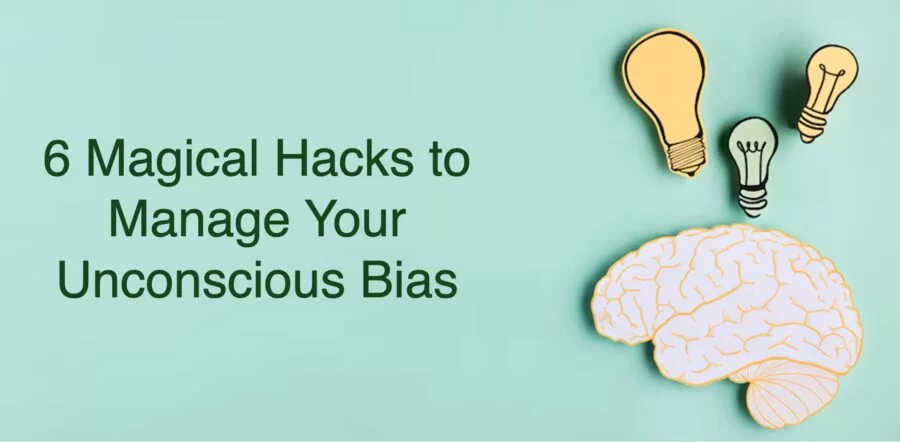Author: Sushil Tayal
All of us, whether we realise it or not, have unconscious biases that influence the way we think, interact with others or make decisions.
Picture this: You are reviewing applications for a new position, and without even realising it, you find yourself gravitating towards candidates who remind you of yourself; Or, in a meeting, you quickly get switched off when a particular colleague of yours makes a presentation. These are examples of unconscious bias, those sneaky preferences and stereotypes that influence our decisions and actions without us even realising it.
But why does this happen? The Nobel prize winner author & psychologist, Daniel Kahneman in his book Thinking, Fast and Slow has explained the reasons. It explains how the brain’s two systems work: ”System 1″ is fast, instinctive, automatic, frequent, emotional, stereotypic, unconscious, and emotional (Fast Brain); ”System 2″ is slower, more deliberative, effortful, infrequent, calculating, conscious and more logical (Slow Brain).
Our brain has to process millions of pieces of information per second. It means too much load, therefore, creates mental shortcuts that aid our quick decision-making and that’s where Unconscious Bias originates. These quick shortcuts often lead to skewed judgments and reinforce stereotypes.
Unconscious (or implicit) biases are learned stereotypes that are automatic, unintentional, deeply ingrained, universal, and influence behaviours. These biases are often shaped by our upbringing, experiences, and the broader societal messages we have been exposed to.
Unconscious bias can seep into every aspect of the workplace, in recruitment, performance evaluations, promotions, and career development and is the biggest roadblock to Diversity & Inclusion efforts.
We all have biases, whether we are aware of them or not. Let me share with you, 6 Magical Hacks that may help reduce unconscious biases
1. Assess: Reflecting on your biases and continuously assessing your own behaviour for biases does help. It is important to regularly take a moment to reflect on your thoughts and actions. Are there any hidden biases influencing how we see others? By acknowledging them, we can start to challenge them and eliminate them.
2. Be Inclusive: Embrace divergence in our life routine. Take small steps. Have conversations with colleagues from different backgrounds, and actively seek different perspectives and experiences. Try something new that you have not done in the past, including trying different places to visit, different sports, different modes of travel, different attire, different food etc. Openness to trying new/unknown things opens the eyes to inclusivity.
3. Collaborate: Try making collective decisions. When it’s time to make decisions, don’t go it alone. Do involve people with different viewpoints and ensure everyone’s voice is heard. Actively seek diverse voices and perspectives in your decision. This will not only provide you different options to explore, but it will also reduce your preconceived thinking.
4. Delay: Not all decisions have to be taken here and now. Avoid making decisions or judgements in stressful situations or in haste. In stressful situations, it is easy to jump to conclusions. Take a moment to pause & think, gather all relevant information, and carefully consider the implications before deciding. Bring your slow brain into play to reduce the probability of your biases clouding your judgment.
5. Empathise: Walking in Their Shoes – Empathy is a powerful tool for combating bias. When we try to understand other person’s points of view, from where they are coming from and what they’re going through, listen to their stories, validate their feelings; it enables us to validate our perspectives and hence helps reduce our bias.
6. Fact Based: Verifying facts & data. We all are trained to make fact-based decisions, however, our “facts” may are not universal. We all have a tendency to derive information from our environment through our senses (sight, sound, touch, smell, taste) and our mind processes these inputs & interprets them. Facts, to us, are our interpretation of what is right and true. (just think about how long it was a “fact” that the Earth was flat… some still believe it is true…). We may be influenced by the “Attentional Bias” and hence focus on a minuscule portion of the entire landscape to make judgments. In today’s era of misinformation and alternative facts, it is more important than ever to verify the information and base decisions on facts and data. Take the time to gather accurate and reliable information before making judgments or decisions. By basing our actions on reality, we can avoid falling into the trap of biases.
Embrace these magical hacks – assessing our biases, embracing diversity, collaborating, delaying instinctual decisions, empathising, and relying on facts and embark on your journey to reduce your biases.
Let us commit to fighting bias and creating a brighter future where everyone feels valued and respected.
Sushil Tayal – Enabling World
#bias #unconscious bias #inclusion

